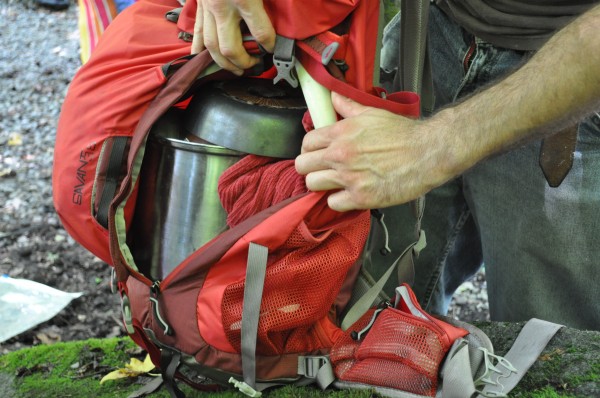ONE OF THE WORST MISTAKES I ever made was “pre-packing” my food for the Appalachian Trail (AT). A couple months before I left, I arranged a dozen boxes, each with an address for a different post office along the AT, then filled them with the same bulk-purchased Power Bars, GORP, macaroni and cheese, tuna cans, and Vigo prepackaged beans and rice. Then I set up a schedule for my parents to mail the boxes while I was hiking the trail.
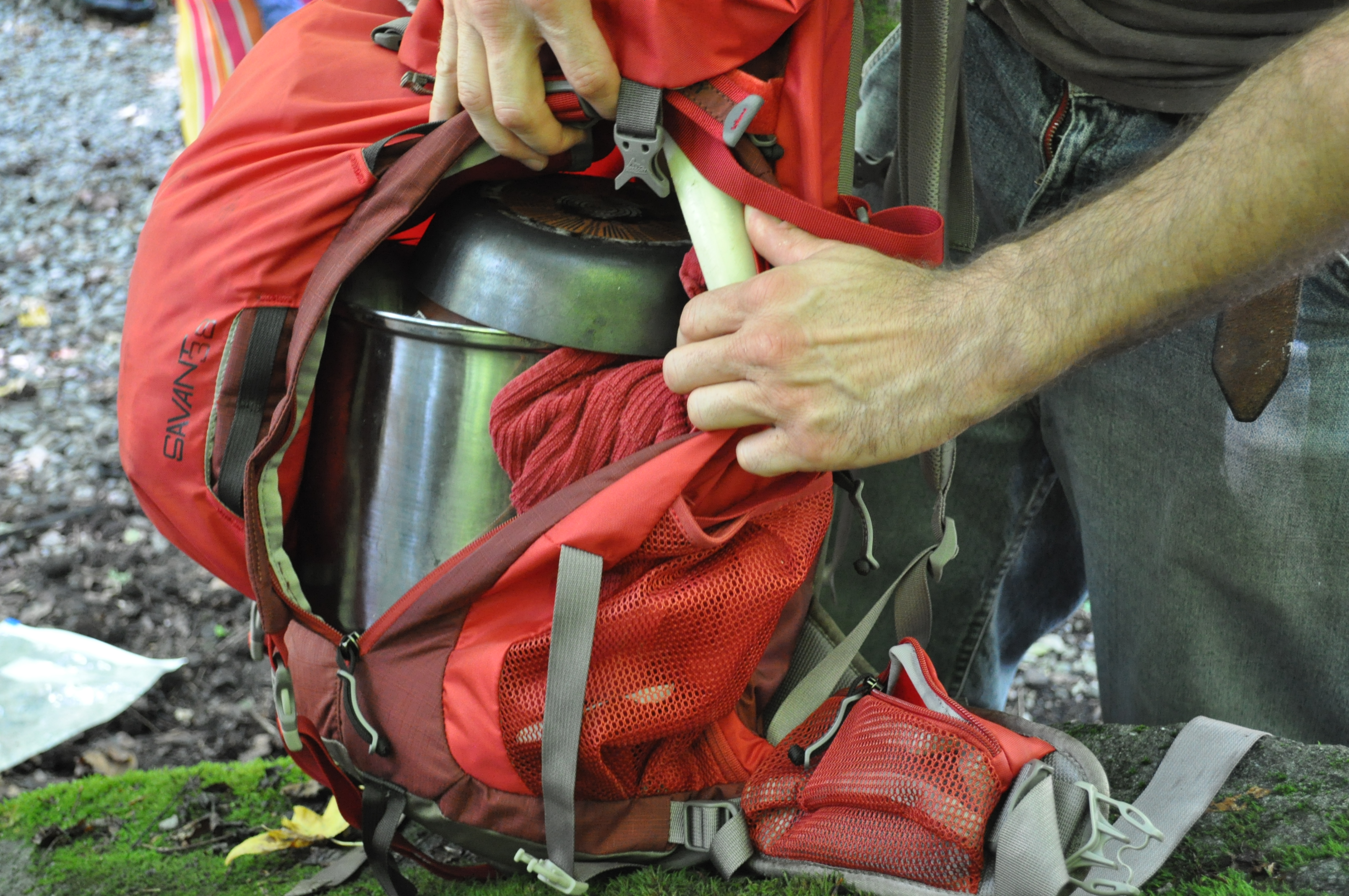

Worse than the stale GORP, the almost inedible 45th round of Vigo, the abominable tuna cans, was that I missed opportunities all along the way to vary my diet and evolve my packing routine around the foods I found in each town. I missed the chance to get creative. This is really the key lesson for the article: if nothing else, remember that learning to pack food for trips, especially on long trails or backcountry, is all about experimentation. Each group is different; each trip is different; and what works well in one context or with one gear setup may not translate as well to a different travel style.
So with that in mind, here are some general points to think about, as well as a few tricks from backcountry veterans.
Consider how you’re getting in.
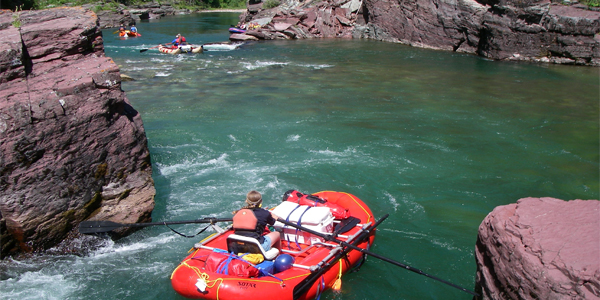
Want to pack it all into the backcountry? Take an oar rig with a big fat drybox. Middle fork of the Flathead, Montana. Photo by Brian French
The most creative and often luxurious backcountry meals typically go down on float trips. Because you don’t have to worry so much about weight, you can bring in more food, particularly more fresh fruits and vegetables, than you might if you were backpacking.
As float trips often involve large groups (a dozen or more people), they typically result in different kitchen “teams.” For example, on a multi-day river trip down the Dolores in Colorado, we had three different teams, each responsible for a dinner, a lunch, and (as is S.O.P. on float trips) an alcoholic beverage “service.”
It was interesting to see how each team worked out its responsibilities. The first night’s team had premade a complex chicken and rice stew, then stored it cold in large ziplock bags. It was a good idea in theory — all the team really had to do was just warm the meal and serve — but in practice it’s difficult to heat large quantities of food using big cookpots and small, high-intensity stoves. The first night’s team ended up burning the bottoms of the pots but never fully heating the stew. No matter, the rum margaritas were a hit.
The second dinner team went for an ambitious burrito station with lots of options. The issue, however, was that we’d all run the biggest rapid late in the day, then stayed on the water too long after that (we kept passing up decent sites for the “perfect” one), and by the time we got camp set up, several of us were in the initial stages of hypothermia. This crew’s almost lethally potent grain-alcohol-soaked fruit chunks (set out like cocktails) weren’t helping either, as people began literally going into stupors before hot beans and rice, meat, cheese, tortillas, and veggies were finally served.
I recount all this to illustrate the next important consideration:
Consider your activity levels and the length of time you want to spend with food prep / meals / cleanup.
It took me scrubbing gnarly prepackaged beans and rice out of a freezing cookpot more than 30 times on the AT before I finally switched my primary meal to a simple noodle soup that was virtually mess-free. It all came down to the type of activity. Wintertime thru-hiking means very little daylight, constant cold temps, and overall low energy after you’re done hiking each day.

Going in by glacier plane? No reason then not to bring the hot sauce, Baileys, and whatever else. Check out this kitchen with “countertops,” storage, and different work surfaces all carved into the snow and covered by a Megamid. Photo by Matador Ambassador Drew Tabke.
A good contrast to this would be true “winter camping” or snow camping. Access could either be by ski, sled, snowshoes, or, as is in the case with Drew Tabke this summer, glacier plane.
With true snow-camping, you’re not typically traversing an area but staying in one place for an extended amount of time, with a big emphasis on meals and staying comfortable.
Another example of this is the kind of backcountry travel I transitioned into in Central America, basically wilderness coastline camping. Here the concern wasn’t staying warm but basically maximizing food supplies in order to stay out in isolated surf spots for as long as possible. This is how I evolved to the “bigass cookpot” method of packing food. As opposed to a small backpacking cookpot / stove setup, I could bring much more food simply by bringing a much bigger pot and learning to cook over a fire.
This brings me to the next consideration:
Consider how long you want to stay out.
On a recent trip to Nahanni National Park in the Northwest Territories, Canada, Matador Ambassadors Manager Cody Forest Doucette crossed paths with the crew of the 2012 Trans-Territorial Canoe Expedition. These fellas are undertaking a four-month, 2600-mile canoe journey through the most remote sections of wilderness in Canada.
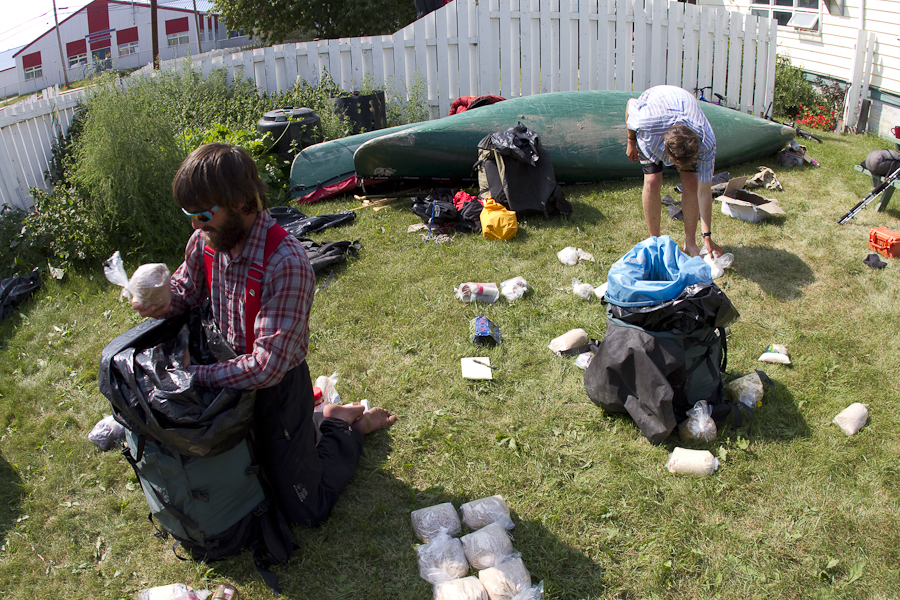
Will they be able to augment their food supplies via fishing? How much food do they consume as a group per breakfast, lunch, dinner, and snacks?
All of these are factors you have to consider, whether you’re going into the woods for a couple days or a couple weeks.
Cody, who has participated in numerous expeditions over the years, recommends making a list: “This is probably the most crucial element, and many expedition leaders go so far as to break the whole thing down into a grid with people’s names and what each will be eating for every meal of every day out.”
Consider what gear you have for packing.
Now that we’ve covered all these general considerations, let’s focus on the actual packing. Most people reach the backcountry via backpacking, so we can begin there.
1. Breaking food down into small, reinforced packages
Begin by taking food out of its original packaging. Bags of pancake mix, boxes of noodles — these things not only take up extra room and weight, but break, especially once they get wet. Put food items into ziplock bags, removing as much air from the bags as you can before sealing.
2. Compartmentalizing with stuff sacks
Cody recommends empty stuff sacks to divide food into easy to find bundles — one for breakfast (oatmeal, coffee), one for lunch and snacks (energy bars, salami, cheese, chocolate), and one for dinners, which he notes are “usually freeze-dried bags during a long backcountry trip.”
3. Organizing for comfort / access while hiking
Cody notes: “The dinners go in the bottom of my pack with the sleeping bag, the breakfast bag gets stuffed in closer to the top, and the lunch and snacks get priority seating someplace easy to grab, an outside pocket or at the very top of my pack.”
Pots and stoves have a tendency to work their way through your pack and end up against your back. One trick I’ve learned over the years is to take a Frisbee — an indispensable piece of gear in its own right (plate, desk, sink, cutting board, etc.) — and wedge it with clothes as a kind of backrest to prevent pot handles and other uncomfortable items from coming into contact with your back.
4. Making sure you have sufficient gear for safe / clean storage in bear and / or rodent country.
In addition to foodstuffs, are you bringing a small kit of biodegradable soap (and not for washing in the river, either), and a small sponge or scrubber? Do you have a ziplock for those items once you’ve finished? Do you have an extra stuff sack and extra line for putting all your food / items that have come into contact with food in a bear bag that you can hang from a tree?
What about mice? How clean is your camp when you’re done eating? Did you bring snacks into your tent? Do you know how to set up a “mice-hang” so they can’t enter your food bag?
Please look for forthcoming articles from Matador about backcountry skills, including how to keep a clean camp and set up rodent / bear-proof food stores. In the meantime, we’ll leave you with this final image of when everything’s packed and ready to go deep in the woods. Good times.
This post was sponsored by our friends at Gregory, whose gear is helping stoke the Matador Ambassadors.
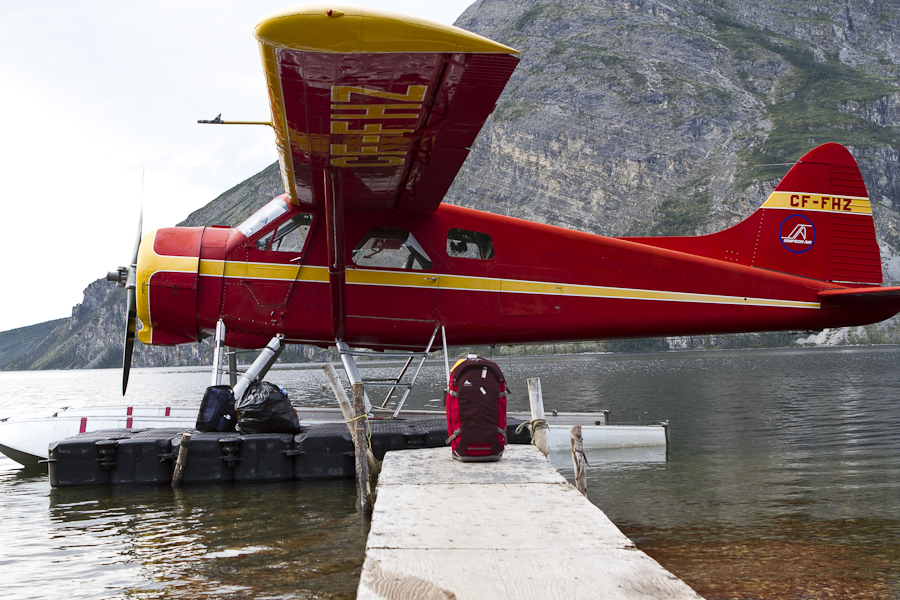
Nahanni N.P., Northwest Territories, Alaska. Photo by Cody Forest Doucette.
